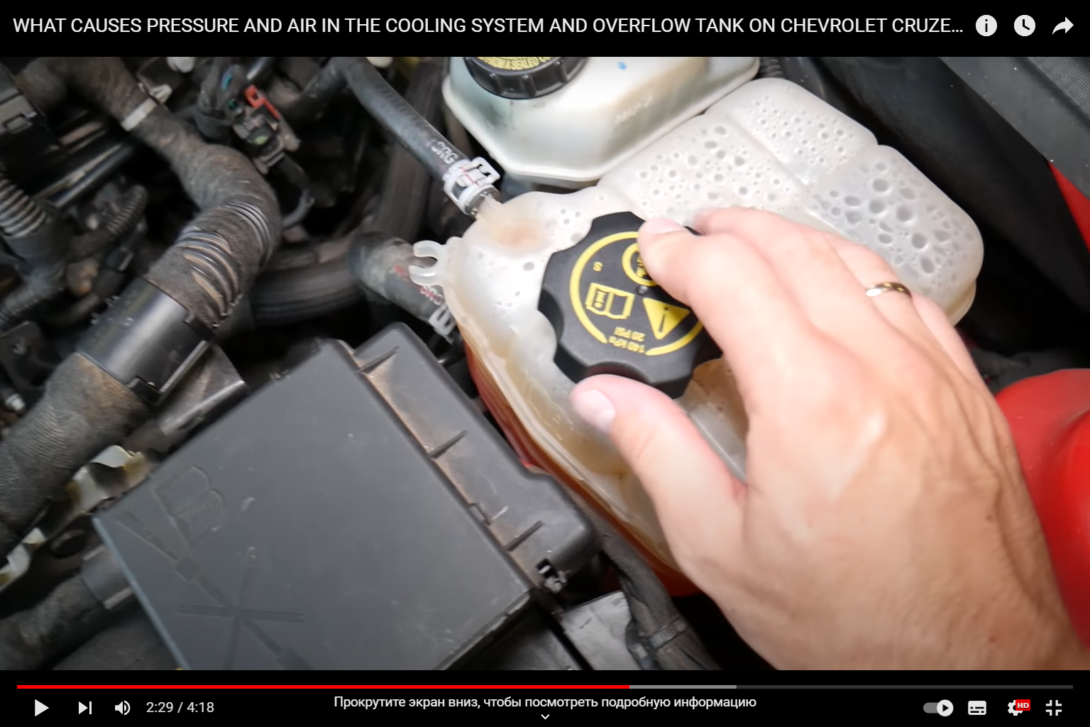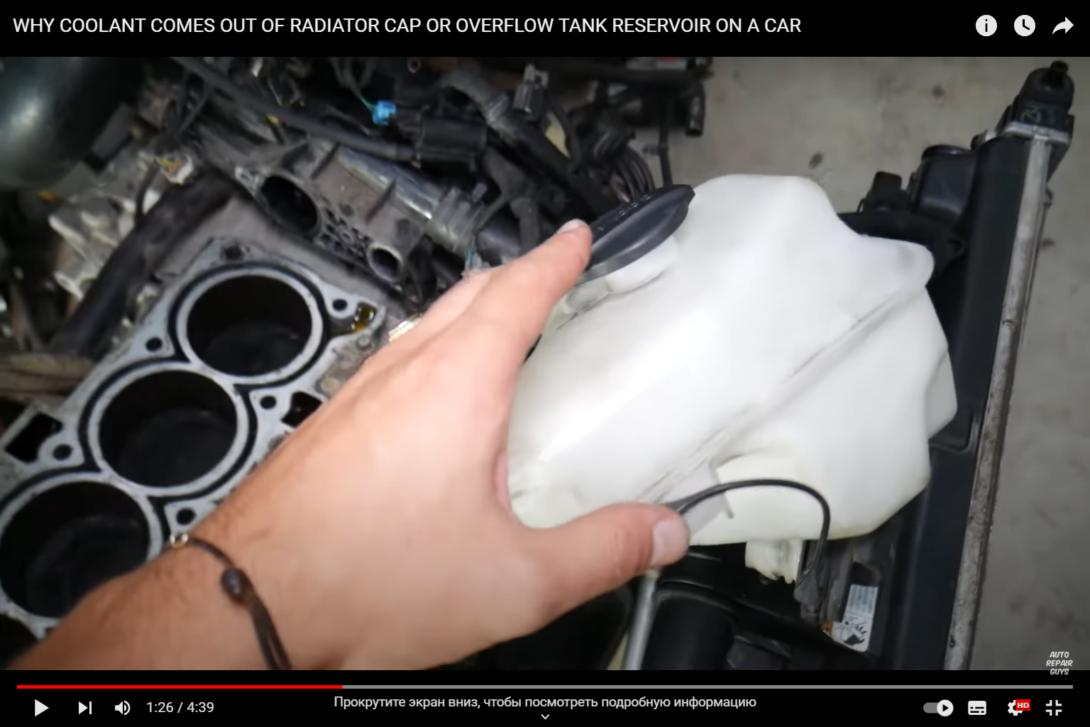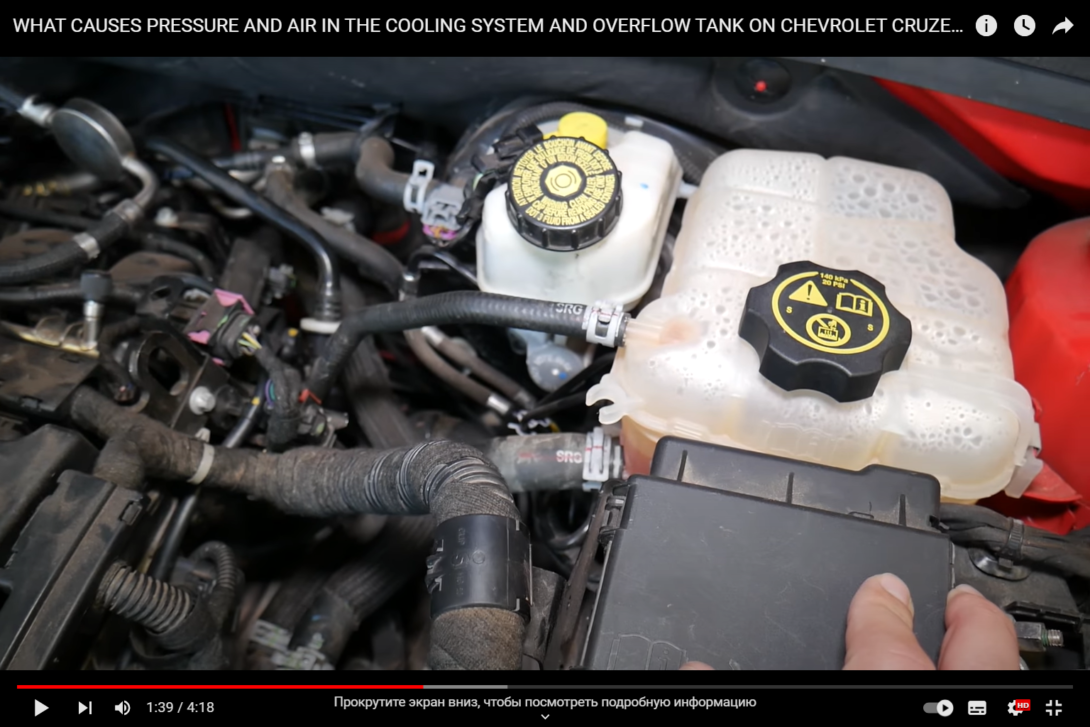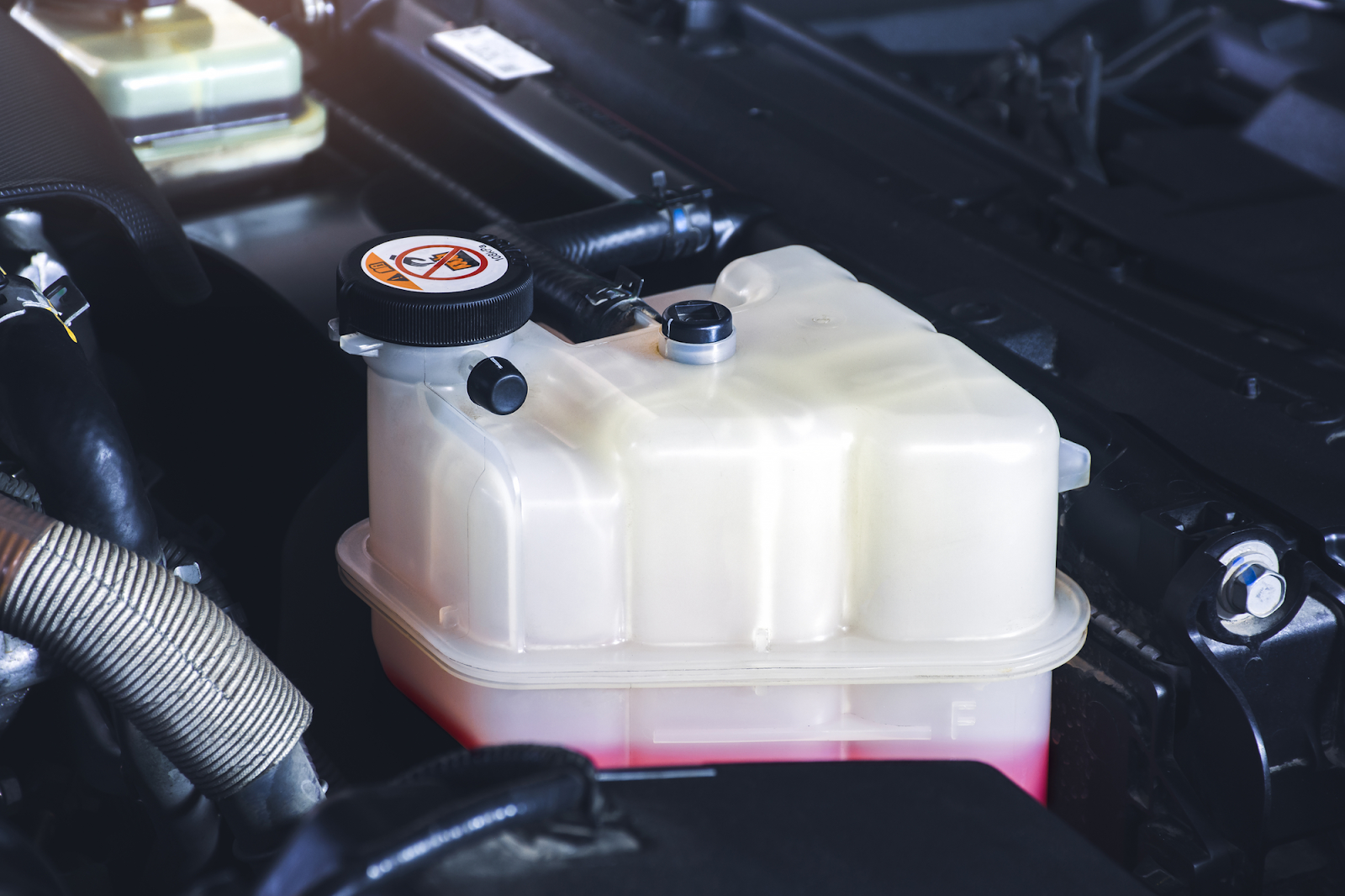Coolant reservoir overflowing is a common issue faced by car owners and can be an alarming sight. It indicates an underlying problem in the cooling system that needs immediate attention.
Understanding the Coolant Reservoir and Its Function
Before we dive into the overflowing issue, let’s first understand the purpose of the coolant reservoir. Also known as the expansion tank, it plays a crucial role in maintaining the coolant level and pressure within the cooling system. As the engine heats up, the coolant expands, and instead of releasing it into the environment, it gets directed into the reservoir. When the engine cools down, the coolant contracts, and the reservoir releases the stored coolant back into the system.
Common Causes of Coolant Reservoir Overflowing
Coolant System Overpressure
One of the primary reasons for coolant reservoir overflow is the coolant system operating under high pressure. This can be caused by a malfunctioning radiator cap, a faulty pressure release valve, or a blockage in the cooling system.
Engine Overheating
When the engine temperature rises beyond its normal operating range, it can lead to the expansion of coolant beyond the reservoir’s capacity. Engine overheating may result from a malfunctioning thermostat, a leaking cooling system, or insufficient coolant levels.
Air Pocket in the Cooling System
Air pockets can get trapped in the cooling system during coolant refills or repairs, preventing the proper flow of coolant and leading to overheating and reservoir overflow.
Coolant Leak
A coolant leak, whether from a cracked hose, a faulty gasket, or a damaged radiator, can cause a drop in coolant levels, leading to overflow when the engine heats up.
Head Gasket Failure
A blown head gasket can allow the mixing of coolant and engine oil, leading to increased pressure in the cooling system and potential overflow.
Effective Solutions for Coolant Reservoir Overflowing
Check and Replace the Radiator Cap
The radiator cap plays a crucial role in maintaining the cooling system’s pressure. If it’s faulty, it can lead to overpressure and subsequent reservoir overflow. Regularly inspect and replace the cap if needed.
Inspect and Repair Leaks
Thoroughly inspect the entire cooling system for any leaks and promptly address them. Replace damaged hoses, gaskets, or the radiator as necessary.
Burp the Cooling System
If there’s an air pocket causing coolant circulation issues, you can “burp” the cooling system to remove the trapped air. Follow the manufacturer’s guidelines for your vehicle to perform this procedure.
Address Engine Overheating
Resolve the underlying issues causing engine overheating. Replace a malfunctioning thermostat, fix any cooling system leaks, and ensure the cooling fans are functioning correctly.
Preventive Measures to Avoid Coolant Reservoir Overflow
Regular Cooling System Maintenance
Schedule routine cooling system maintenance, including coolant flushes and inspections, to keep the system in optimal condition.
Use the Correct Coolant Mixture
Ensure you’re using the right coolant type and the proper coolant-to-water ratio recommended for your vehicle.
Follow Manufacturer’s Guidelines
Adhere to the manufacturer’s maintenance schedule and recommendations to prevent potential cooling system issues.
Monitor Temperature Gauges
Pay attention to your vehicle’s temperature gauges and address any sudden spikes promptly.
Avoid Overloading the Cooling System
In extreme conditions, such as towing heavy loads or driving in extreme heat, be mindful of your engine’s cooling capabilities.

Importance of Regular Coolant Inspections
Regular coolant inspections play a pivotal role in maintaining a healthy cooling system and preventing coolant reservoir overflowing. By monitoring the coolant levels, checking for leaks, and ensuring the proper coolant mixture, you can catch potential issues early on. Timely maintenance can save you from costly repairs and keep your engine running efficiently.
Why Are Regular Inspections Necessary?
- Early Detection of Issues: Regular inspections allow you to identify small leaks, damaged hoses, or faulty radiator caps before they escalate into major problems. Addressing these issues promptly can prevent coolant reservoir overflow and engine damage;
- Optimal Cooling System Performance: Proper coolant levels and a well-functioning cooling system ensure that your engine stays within the recommended temperature range, enhancing its overall performance;
- Extended Engine Life: A well-maintained cooling system can extend the lifespan of your engine, saving you from premature wear and tear.
DIY Coolant Reservoir Maintenance Tips
While major cooling system issues should be handled by professionals, some simple maintenance tasks can be performed at home to ensure the proper functioning of your coolant reservoir.
DIY Maintenance Tips
- Check Coolant Levels Regularly: Make it a habit to check your coolant levels at least once a month and top up if necessary;
- Inspect the Reservoir for Cracks: Regularly inspect the coolant reservoir for any visible cracks or damage. A damaged reservoir can lead to coolant leaks;
- Clean the Reservoir: Over time, debris and contaminants may accumulate in the reservoir. Clean it out periodically to maintain the integrity of the coolant.
Seeking Professional Help
If you notice persistent coolant reservoir overflowing or encounter any complex cooling system issues, it’s essential to seek the assistance of a qualified mechanic or automotive technician.
Why Professional Help Matters
- Accurate Diagnosis: Professionals have the necessary tools and expertise to accurately diagnose cooling system problems, saving you time and money on unnecessary repairs;
- Quality Repairs: Skilled mechanics can perform high-quality repairs and replacements to ensure your cooling system functions optimally;
- Preventive Maintenance: Professionals can recommend preventive maintenance schedules tailored to your vehicle, preventing future issues.

The Impact of Climate on Coolant Reservoir Overflowing
The climate in which you drive your vehicle plays a significant role in the cooling system’s performance and the likelihood of coolant reservoir overflowing. Different climate conditions present unique challenges that need to be addressed for optimal engine cooling.
Hot Climate Conditions
In hot climates, the cooling system works harder to dissipate heat from the engine. High temperatures can lead to greater coolant expansion, putting more stress on the reservoir and increasing the risk of overflow. It’s essential to monitor coolant levels more frequently and ensure your cooling system is in top condition to handle the heat.
Cold Climate Conditions
In cold climates, freezing temperatures pose a threat to the cooling system. If the coolant mixture is not suitable for cold weather, it can freeze and potentially damage the engine and cooling system components. Adequate antifreeze protection is crucial to prevent coolant freezing and ensure the cooling system’s functionality.
Humid Climate Conditions
Humid climates can also affect the cooling system’s performance, as higher humidity levels may reduce the cooling system’s ability to dissipate heat. Regular inspections and maintenance are essential to prevent coolant reservoir overflowing and engine overheating in such conditions.
The Role of Coolant Pressure in the Cooling System
Coolant pressure is a critical aspect of the cooling system, and any deviations from the recommended levels can contribute to coolant reservoir overflowing.
Understanding Coolant Pressure
The cooling system operates under a controlled pressure to raise the boiling point of the coolant and prevent it from vaporizing. The radiator cap plays a crucial role in maintaining the correct pressure. If the cap’s pressure release valve is faulty or if there is a blockage in the system, the pressure may build up, leading to coolant reservoir overflow.
Importance of Proper Coolant Pressure
- Prevents Boiling: Adequate coolant pressure prevents the coolant from boiling even at high temperatures, ensuring efficient heat transfer;
- Avoids Coolant Loss: Correct pressure helps to maintain the coolant levels within the system, avoiding coolant loss and potential engine damage;
- Protects Against Overheating: Maintaining the right pressure is essential for preventing engine overheating and ensuring smooth engine performance.

Upgrading Your Cooling System for Optimal Performance
If you find yourself frequently facing coolant reservoir overflowing or other cooling system issues, it might be time to consider upgrading your cooling system.
Upgrading Options
- High-Performance Radiator: Consider upgrading to a high-performance radiator that offers better cooling efficiency and improved heat dissipation;
- Thermostatically Controlled Fan: Installing a thermostatically controlled fan can help regulate engine temperature more effectively, reducing the risk of overheating;
- Coolant Additives: Some aftermarket coolant additives can enhance the cooling system’s corrosion resistance and extend its lifespan;
- Coolant Reservoir Expansion Kit: An expansion kit can increase the coolant reservoir’s capacity, accommodating coolant expansion without overflow;
- Silicone Hoses: Replacing standard hoses with silicone hoses can improve durability and prevent leaks.
Conclusion
Maintaining a healthy cooling system and preventing coolant reservoir overflowing are vital for the smooth functioning of your vehicle. By understanding the causes, implementing solutions, and following preventive measures, you can ensure your engine stays cool and performs at its best. Regular inspections and professional assistance will help you keep your car in top condition, saving you from potential engine damage and costly repairs.
FAQs
It’s not advisable to drive your car if the coolant reservoir is overflowing, as it indicates an underlying issue that can lead to engine damage. Park the vehicle safely and seek professional assistance.
Regularly check the coolant levels at least once a month and top up if necessary. Also, perform a more thorough inspection during routine maintenance.
While some minor issues like a faulty cap can be DIY-fixed, diagnosing and addressing major cooling system problems are best left to professional mechanics.
A dropping coolant level without visible leaks may indicate an internal engine problem, such as a blown head gasket. Have a professional inspect your vehicle.
It’s not normal for the coolant reservoir to be empty occasionally. Consistently low coolant levels indicate an issue that requires attention.
